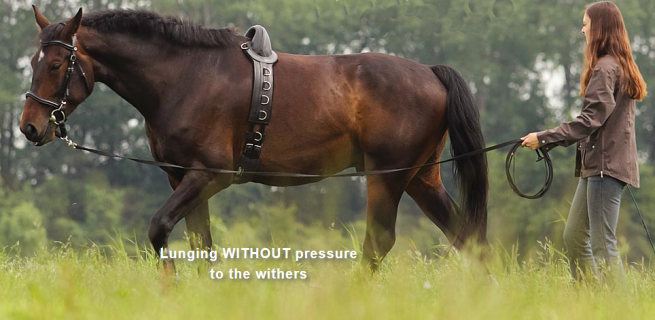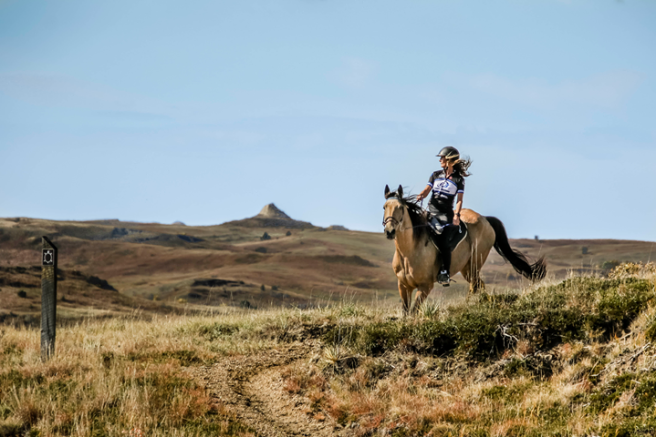
In an article written by Christa Leste-Lasserre for The Horse she relates studies done by Russell Guire, a PhD candidate at the Royal Veterinary College and a researcher at Centaur Biomechanics in the UK. The article titled, Training Aids: How Their Fit Could Help or Hinder Longeing Horses, discusses lungeing your horse for training using a surcingle, side reins, and other training aids. Leste-Lasserre writes “While science has already confirmed the usefulness of training aids…, improperly fitted training rollers [surcingles] could be squelching any benefit these systems offer.”
“ ‘We’ve noted significant pressure under the training roller that’s close to the pressure found during a sitting trot,’ Guire said. ‘Most rollers don’t have trees, so when they’re tightened up, they put that pressure directly onto the horse’s spine at about the level of T12-T13 (thoracic vertebrae). We believe that this pressure could reduce any benefits the horse could have from the training aids. Previous studies by the same team have already indicated that pressure at T12-T13 inhibits locomotion.’”
The Barefoot Surcingle imported from Germany solves this issue of pressure on the back and withers. The pommel of the surcingle protects the horse’s withers and spine. Underneath the Barefoot Surcingle pommel the withers remain unrestricted and there is no pressure – neither on the withers nor along the sides. The supports on both sides are padded softly and extra wide, so that muscles can develop without being squeezed.

Lungeing and ground driving is a great training tool that can be used to introduce young horses to the bit, and to tune up and advance older horses. Working properly with a surcingle and side reins or long lines, the horse is encouraged to flex to the pressure of the bit at the pole and lift and round his back. Developing the horse’s top line in this manner helps the horse to carry the weight of the rider in balance and comfort. Using the Barefoot Surcingle will insure you are building muscle properly without impeding the forward motion and stride of your horse.

